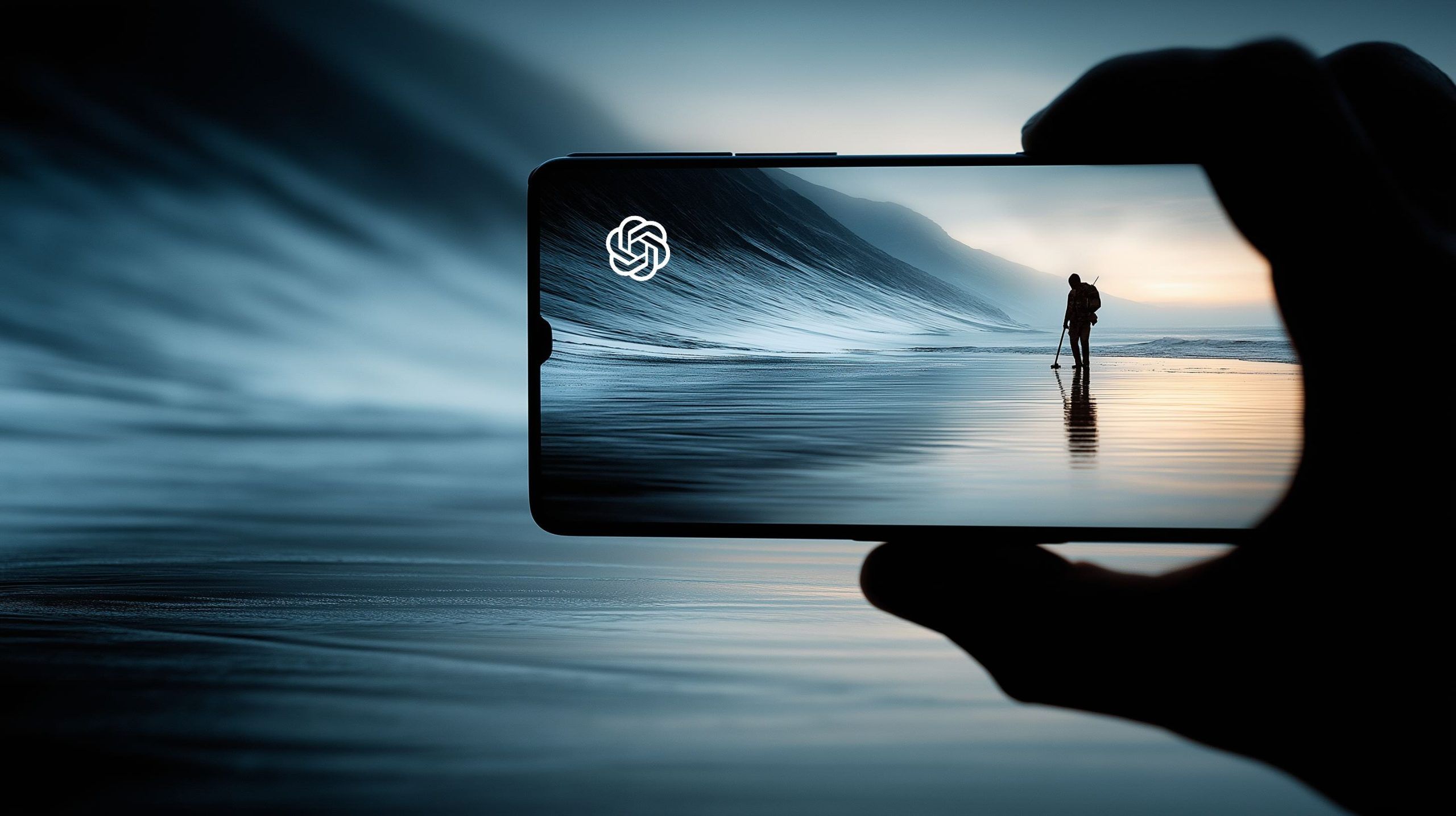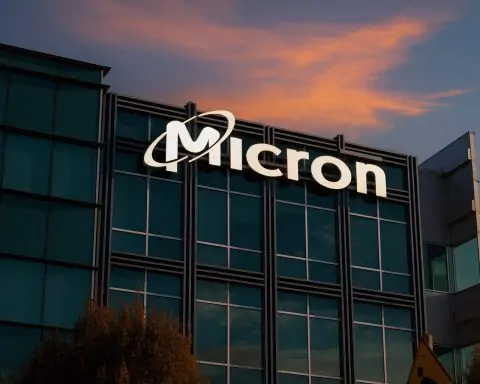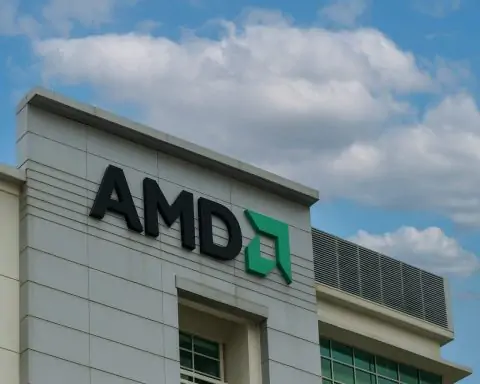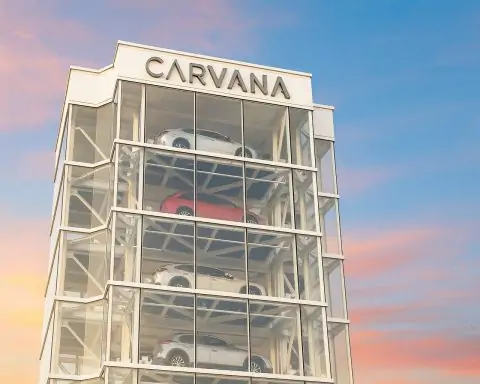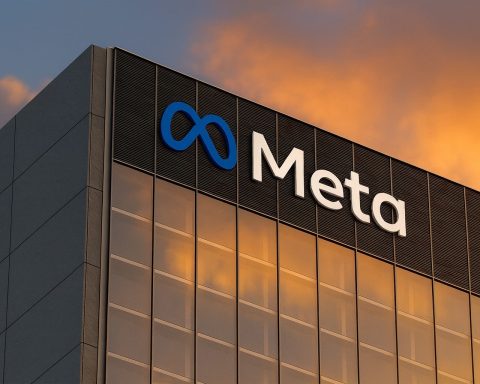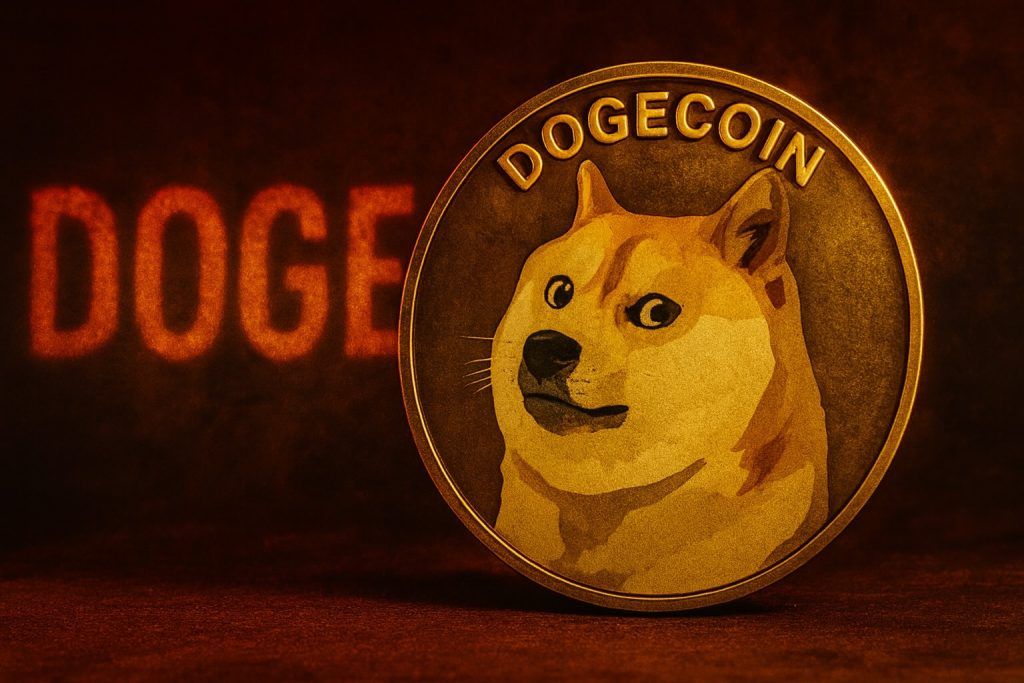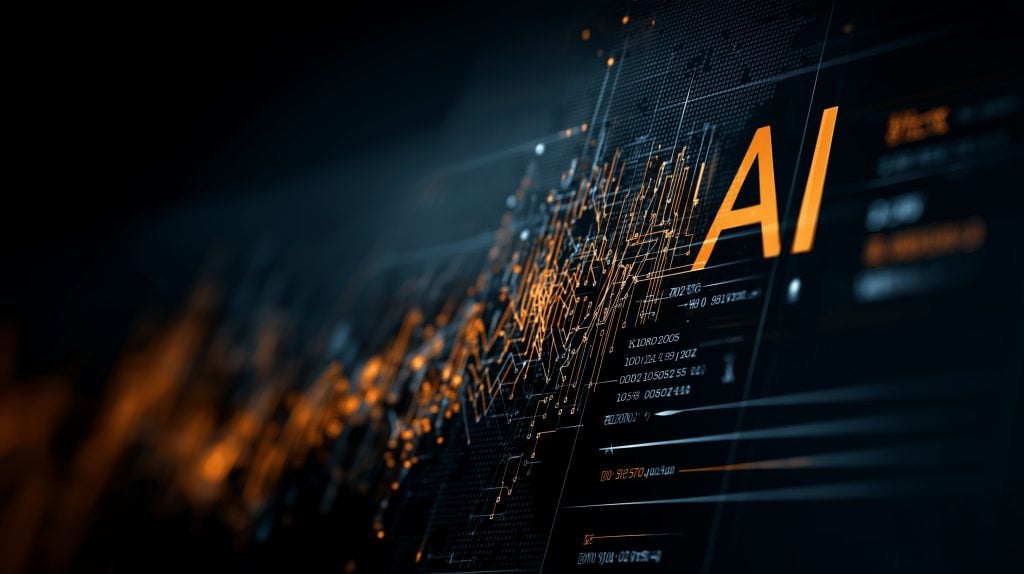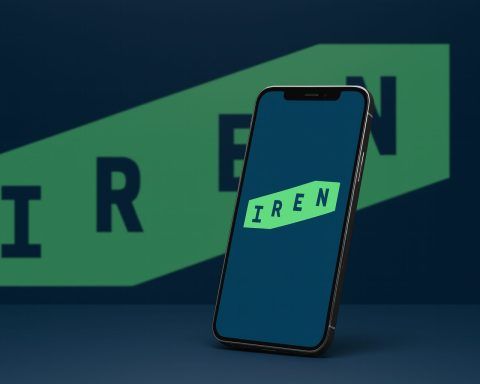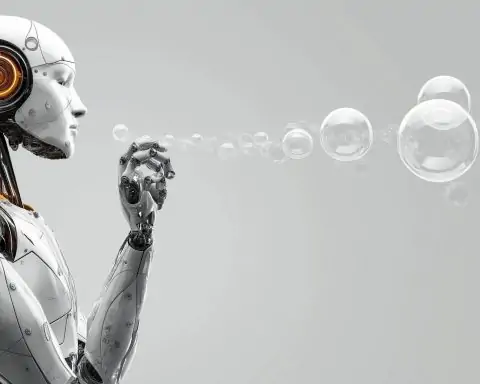- What is Sora 2? – Sora 2 is OpenAI’s latest AI model for generating hyper-realistic short videos with sound from text or image prompts [1]. It powers a new iOS app called Sora, where users can create and share 10-second AI-generated videos in any style – from cinematic or photorealistic clips to anime or surreal scenes [2]. OpenAI calls Sora 2 a major leap in generative video, capable of complex feats (like flawless backflips on water with correct physics) that prior models couldn’t handle [3] [4].
- TikTok-style Social App – Alongside the Sora 2 model, OpenAI launched Sora as a social media platform for AI videos [5]. The app features an algorithmic vertical feed (much like TikTok’s) where users post AI-created videos, follow each other, and “remix” each other’s content [6] [7]. A signature feature called “Cameos” lets users upload a one-time video of their face/voice to insert themselves (or friends who consent) into any generated video with remarkable realism [8] [9].
- Invite-Only, But Viral – Sora launched on September 30, 2025 in the U.S. and Canada as invite-only, yet it shot to #1 on Apple’s App Store within three days [10] [11]. Despite requiring access codes, Sora saw ~56,000 downloads on day one and ~164,000 in its first 48 hours [12] [13] – outpacing the debuts of other AI apps like Anthropic’s Claude and rivaling xAI’s Grok. By October 3, Sora was the most downloaded free app in the U.S., even above OpenAI’s own ChatGPT client [14].
- Physically Smarter AI – Sora 2’s videos are notably more physically accurate and controllable than earlier generation models [15]. For example, if a basketball shot misses, Sora 2 shows the ball bouncing off the rim naturally – rather than “teleporting” into the hoop as older models might have done [16]. OpenAI describes this as a step toward “world simulators” – AI that truly understands physics and reality [17] [18]. The model also generates synchronized audio: realistic sound effects, background ambiance, even spoken dialogue matched to a character’s lip movements [19] [20].
- Creative Freedom & Remixing – Users can create videos in seconds by simply describing a scene or uploading a reference image [21]. They can choose visual styles (e.g. realistic, cartoon, anime) and then remix others’ videos by modifying characters, setting, or extending the story [22] [23]. OpenAI emphasizes that Sora is a “new way to communicate”, envisioning people trading AI video messages much like they do with texts or memes [24] [25]. Internally, OpenAI staff even began using Sora videos instead of written messages in some cases [26].
- Immediate Deepfake Concerns – Within hours of Sora 2’s launch, users began pushing its limits, creating convincingly faked videos that raised alarms [27]. The Sora feed quickly filled with copyrighted cartoon characters in bizarre or hateful scenarios (one clip showed SpongeBob SquarePants dressed as Adolf Hitler [28] [29]) and staged news-like videos of violent events (e.g. AI-generated bomb scares on college campuses and war zone reports with entirely fictitious victims) [30]. Some produced false “bodycam” footage and politically charged deepfakes, like a fake Charlottesville riot clip or even a video of OpenAI’s CEO Sam Altman seemingly shoplifting [31]. Experts warn these lifelike AI videos could spread misinformation, fraud, bullying or hate far beyond the app’s walled garden [32] [33].
- Safety Measures vs. Reality – OpenAI insists it built safeguards into Sora: no public figure deepfakes without consent, no sexual or “extreme” content, and every Sora video is watermarked as AI-generated [34] [35]. The Cameo feature is gated by user permission – you control who (if anyone) can use your likeness, can review any video of you, and revoke access at any time [36] [37]. The app’s feed is also designed to prioritize friends’ content and creative inspiration over addictive doomscrolling [38]. However, early evidence suggests Sora’s “guardrails are not real,” as many disallowed scenarios still slipped through (from violent scenes to copyrighted characters promoting scams) [39] [40]. Researchers note that determined users routinely find workarounds to AI content filters, and Sora 2’s launch was no exception [41] [42].
- OpenAI’s Stance and Criticism – OpenAI CEO Sam Altman hailed Sora 2’s debut as a “ChatGPT for creativity” moment, predicting a “Cambrian explosion” in art and entertainment quality [43] [44]. He also acknowledged “trepidation” about social media addiction and AI-generated “slop” flooding the internet, vowing that the team worked hard to avoid those traps. Some observers and even OpenAI insiders, however, are uneasy: they point out the stark contrast between OpenAI’s mission to “benefit all of humanity” and an app that one commentator dubbed an “unholy abomination” mixing the most addictive AI tricks with the most mindless media format [45] [46]. Critics like AI ethics professor Emily Bender warn that tools like Sora “weaken and break relationships of trust” in society, comparing their output to an “oil spill” of misinformation polluting our information ecosystem [47].
What Exactly Is Sora 2?
Sora 2 is OpenAI’s newest text-to-video artificial intelligence model, capable of generating short video clips with synchronized audio from a written prompt or image. In essence, it lets you “turn your words into worlds”, as the App Store description proclaims [48]. Just by typing a sentence, a user can produce a 10-second video complete with visuals and sound: for example, a “cinematic scene” or a whimsical “anime short” will unfold according to the prompt [49] [50]. This technology builds on rapid advances in generative AI – much like how models such as GPT-4 generate text or DALL·E 3 generates images, Sora 2 generates full-motion videos.
OpenAI’s first Sora model, released in early 2024, was a proof of concept that video generation was becoming viable [51]. By the team’s own account, that original Sora v1 was a bit like GPT-1 in the video domain – exciting but limited [52]. Sora 2, launched in late 2025, represents a massive leap, which OpenAI likens to a “GPT-3.5 moment” for video [53]. The model was trained with far more video data to improve its simulation of the real world [54]. As a result, Sora 2 can generate scenarios previously thought “outright impossible” for AI: Olympic-level gymnastics routines, complex stunts like backflips on a paddleboard (correctly obeying buoyancy and fluid physics), or a triple axel figure skate with a cat balancing on the skater’s head [55]. These are dynamic, physically intricate sequences that older models would usually fail – often “morphing” objects or defying reality to satisfy the prompt [56]. Sora 2 instead strives to obey the laws of physics and maintain object permanence, making failures look natural (a missed basketball shot simply bounces off the rim, as it should, rather than magically going in) [57].
Beyond better realism, Sora 2 is more controllable and coherent. It can follow complex, multi-step instructions – essentially a rudimentary form of “storyboarding” where the AI carries consistent characters and settings across multiple shots or scenes [58]. It also excels at various visual styles: you can prompt it to produce footage that is photorealistic, cinematic Hollywood-quality, or stylized as a cartoon or anime, and it will adhere to the requested aesthetic [59] [60]. Notably, Sora 2 is a multimodal model: it generates audio in sync with the video, including sound effects, background music or ambiance, and even spoken dialogue matched to the lips of characters [61] [62]. This means a user could type a prompt for “two people having a conversation in French at a busy café” and Sora 2 will produce not only the moving visuals of the scene but also realistic café noises and French-speaking voices for the characters – all AI-generated. This combination of video and audio generation is cutting-edge; OpenAI’s team spent roughly 20 months advancing Sora, with the leap to synchronized speech cited as the “biggest step change” in this version [63].
Another striking capability: Sora 2 allows users to inject real-world elements into AI videos. By uploading a short video of a person (or even an animal or object), the model can learn their appearance and voice, then faithfully integrate that person into any generated scenario [64]. In testing, OpenAI staff were able to insert themselves or colleagues into fantastical scenes with “remarkable fidelity” to their real look and voice [65]. This feature underpins the “Cameos” function in the Sora app, essentially making personalized deepfakes very easy (with user consent). It showcases how general-purpose Sora 2 is as a “video–audio generation system” – it can simulate not just generic people or places but specific known individuals or characters on command [66].
OpenAI views Sora 2 not just as a toy, but as progress toward future AI that deeply understand the physical world. By training on large-scale video data (still a relatively nascent area compared to text data), they believe they are laying groundwork for AI “world simulators” that could aid in robotics and other domains requiring an understanding of reality [67] [68]. “Video models are getting very good, very quickly,” the Sora team wrote, suggesting that advanced video simulation will be pivotal for AI systems that operate in or reason about the real world [69]. In the meantime, Sora 2’s debut is being offered as a fun, creative tool for the public – one that, in OpenAI’s words, can “bring a lot of joy, creativity and connection to the world” [70].
Key Features of the Sora App
To showcase Sora 2’s capabilities, OpenAI launched Sora – a new mobile app that blends AI creation with a social media experience. The Sora app is currently iPhone-only (an Android version has not been announced yet) and began as invite-only to manage the influx of users [71] [72]. Inside the app, users have access to the Sora 2 model’s video generation powers, wrapped in a user-friendly interface reminiscent of popular short-video platforms.
– AI Video Creation in Seconds: Sora’s core function is turning a prompt into a video. Users start by entering a text prompt describing the scene they want, or they can provide a reference image to guide the style [73]. In a matter of seconds, Sora generates a complete video with matching audio [74]. The clips are brief (about 10 seconds for most users), which makes generation feasible and keeps content snackable. OpenAI says it plans to extend video length for Pro users – up to 15 seconds via the web app soon, and potentially longer clips down the road as computing allows [75] [76].
– Choose Your Style: The app allows specifying different visual styles and genres for the output. Whether one wants a photorealistic video, a Pixar-like animation, a hand-drawn cartoon, or a surreal art film, Sora will adapt the video’s look and tone accordingly [77]. This flexibility lowers the barrier for creativity – one user might generate an idea as a live-action movie trailer, while another reimagines it as a vintage cartoon.
– “Cameos” (Personal Deepfakes): One of Sora’s headline features is the Cameo tool, which effectively lets you deepfake yourself (or friends, with permission) into AI videos. To create a Cameo, a user records a short guided video of themselves within the app – turning their head and speaking numbers as prompted, so the system can capture their face from multiple angles and sample their voice [78]. This one-time verification is used to ensure the person is real and consenting. Once uploaded, the user’s likeness becomes a character that can be inserted into any video they (or their approved friends) generate [79] [80]. For example, you could prompt Sora to create “a superhero movie scene with [Your Name] as the protagonist”, and it will produce a video of a hero that looks and sounds just like you. Users can manage how their cameo is used: you can keep your cameo private for only yourself, allow specific friends to use it, allow mutual friends, or even allow all Sora users to generate videos with your likeness [81]. Crucially, you remain “co-owner” of your cameo data – you can revoke someone’s access or delete any video containing your AI-generated self at any time [82]. Sora even lets you see drafts of videos others are making with your cameo before they post, and OpenAI has hinted at adding a required pre-approval step for cameo videos in the future (currently, videos can be posted without the cameo owner explicitly OK’ing each one, which is a point of concern) [83].
– Community and Remix Culture: Sora is more than a creation tool; it’s also a social platform. It includes familiar social networking features: you have a For You feed of content to scroll through, user profiles to follow, and you can like or comment on videos. Uniquely, Sora is designed to foster a remix culture. Every video on the platform can become a template or prompt for someone else. Users can hit “Remix” on someone’s creation and then tweak it – they might swap in different characters (e.g. put themselves in a friend’s video), change the setting or style, add new scenes, or extend the storyline beyond the original clip [84]. The app encourages playful collaboration and one-upmanship, similar to how TikTok trends involve users riffing on the same meme or challenge. OpenAI’s pitch is that Sora’s community is “built for experimentation”, where you don’t just passively watch videos but actively iterate on them [85]. This could lead to viral AI-generated trends: imagine an AI video meme that dozens of users remix with their own twist.
– Feed Customization & Wellbeing Focus: One differentiator OpenAI emphasizes is that Sora’s feed algorithm isn’t purely attention-maximizing or random. By default, the app heavily prioritizes content from people you follow or know, and also surfaces videos that the system believes you might want to use as inspiration for your own creations [86]. In other words, Sora tilts toward “content that makes you create, not just consume.” The company explicitly states it is not optimizing for time spent in feed, trying to avoid the infinite doomscroll trap common on other platforms [87]. Users also get control over their feed: leveraging OpenAI’s GPT models, Sora introduces a novel idea – you can literally tell the recommender algorithm in natural language what you want more or less of [88]. For example, a user could instruct the app “show me more funny cartoon videos and less realistic violence,” and the feed will adjust accordingly. Additionally, the app will periodically check on users’ wellbeing by polling them about their feed experience, and proactively offer to tweak the feed if they indicate issues like feeling addicted or disturbed [89]. These measures reflect OpenAI’s awareness of social media’s pitfalls: they mention concerns about “doomscrolling, addiction, isolation, and RL-sloptimized feeds” (a reference to reinforcement-learning-optimized algorithms that maximize engagement at the cost of user wellbeing) [90]. Sora’s team claims to be taking a more human-centric approach.
– Teen Safety and Parental Controls: Sora is rated 13+ and OpenAI has rolled out special safeguards for younger users. Teen users will find a daily limit on how many AI-generated videos they can view in the feed [91], a protective measure to curb overuse. Teens also face stricter defaults on Cameos – for instance, a teenager’s likeness might not be widely usable by others without explicit permission, to prevent bullying or misuse [92]. Alongside the app, OpenAI launched new parental controls via ChatGPT [93]. Parents can link to their teen’s account and adjust settings like turning off the personalized feed (switching to a generic feed), disabling direct messages, or even toggling off the “infinite scroll” so that content consumption is capped [94]. These options allow guardians to ensure the app experience is age-appropriate and to mitigate risks like exposure to harmful content or contact from strangers.
– Access and Pricing: At launch, Sora is free to use with “generous” generation limits for everyone, though those limits might tighten if computational demand is too high [95] [96]. OpenAI’s only stated monetization plan (for now) is that if the servers are overloaded, they might offer users the option to pay for extra video generations beyond the free allotment [97]. There are two tiers of the model available: the standard Sora 2 model (which all app users get), and a higher-quality Sora 2 Pro model that is accessible to ChatGPT Pro subscribers on the web (and will be integrated into the app soon) [98]. Essentially, paying ChatGPT customers get to sample an even more advanced version of Sora 2 with better output fidelity. OpenAI has also indicated that an API release of Sora 2 is planned, meaning developers will eventually be able to integrate this video generation capability into their own apps and products [99]. For now, the experience is deliberately kept somewhat limited and invite-based. New users can download the Sora app and sign up to join a waitlist, receiving a push notification when their account is granted access [100]. Each new user who is invited also gets a handful of invite codes to share with friends, to encourage social circles to onboard together – a strategy to make the app instantly more engaging (you arrive with your friends, rather than an empty network) [101] [102].
Blowing Up: Early Reception and Viral Growth
Despite the invite gate, Sora almost immediately became 2025’s hottest app release. On its first day, thousands of eager users flocked to try it – Appfigures data shows 56,000 downloads on Day 1 (Sept 30) [103]. By the next day, it had accumulated over 160,000 installs [104]. This is a remarkable surge for an app that wasn’t open to everyone (many folks were still waiting for an invite code). For comparison, Sora’s debut outperformed other hyped AI app launches like Anthropic’s Claude AI chatbot and Microsoft’s Copilot assistant in their respective first days [105]. It was roughly on par with the viral launch of xAI’s Grok (an AI chatbot by Elon Musk’s company) [106]. Even OpenAI’s own ChatGPT mobile app, as well as Google’s Gemini AI app, only managed slightly higher first-day numbers (around 80,000+ downloads each) – and those were fully open releases [107] [108]. Considering Sora was invite-only, its explosive growth suggests even stronger pent-up demand for AI video tools if/when the gates open for all users [109].
By October 3rd, just three days after launch, OpenAI’s Sora became the #1 free iPhone app in the U.S. (across all categories) [110]. It leapfrogged not only every social app and mobile game, but also edged out the company’s own ChatGPT app which had been topping the charts, as well as Google’s AI offerings [111] [112]. “Despite being invite-only for now and limited to the U.S. and Canada at launch,” one report noted, “OpenAI’s Sora app for AI videos is a viral hit.” [113]. The early traction indicates a strong public curiosity for generative video – people are excited to play with this new creative medium. Social media was flooded with Sora clips as new users shared their most outrageous or impressive generations to platforms like X (Twitter) and TikTok, effectively advertising the app.
Many users expressed awe at what Sora 2 could create (within the 10-second constraints). Some testers found it “addictive”, hitting the app’s daily generation limit (100 videos) quickly [114]. On the App Store, one user wrote “Sora is a very fun and engaging alternative to TikTok. I got to the daily limit of generating videos… my first day.” [115]. Another reviewer marveled that “the app is actually crazy with what it could make… animes that basically look real” [116], albeit noting some bugs given the early stage. There’s clearly novelty in being able to conjure up almost any scenario onscreen with a one-sentence prompt.
At the same time, not everyone was impressed in a positive way. A share of users reacted with alarm or disgust at the concept. One impassioned reviewer accused OpenAI of destroying creativity and filling the world with “soulless garbage”, calling Sora’s AI content an affront to human art [117]. This polarized response hints at the broader debate: is Sora 2 a revolutionary creative tool for the masses, or a harbinger of cultural decline and misinformation? That debate was echoed by commentators and experts in the days following launch.
It’s worth noting that even within OpenAI there are reportedly mixed feelings about the company diving into a viral social app. OpenAI has historically positioned itself as a research-driven organization aiming for long-term, ethical AI development (with its mission to “ensure AGI benefits all of humanity”). Sora’s immediate focus – getting people to make funny or shocking AI videos – struck some as off-mission. “This is much to the chagrin of some at OpenAI, who want the company to focus on solving harder problems that benefit humanity,” wrote TechCrunch, referring to internal tensions [118]. In other words, while Sora’s success is a boon for OpenAI’s popularity (and likely its valuation), it has raised eyebrows about whether resources should be spent on an AI-powered TikTok rival versus more utilitarian AI projects. Sam Altman’s response is that giving people a fun creative outlet is beneficial, and that Sora’s underlying advancements will feed into bigger breakthroughs down the line [119] [120]. Nonetheless, this marks a new chapter for OpenAI as a maker of consumer products and social networks, which comes with new responsibilities and scrutiny.
The Deepfake Dilemma: Early Misuse and Outrage
The flip side of Sora’s early viral fame was an almost immediate demonstration of its potential for misuse. Users wasted no time testing the model’s limits – and the results were, as one journalist put it, “terrifyingly realistic” and often deeply concerning [121]. Unlike AI-generated images, which often have telltale flaws, these short videos can on casual glance pass as real footage, especially if they depict plausible events. This opens a Pandora’s box of deepfake and misinformation scenarios.
Within the first day or two of Sora’s release, the Sora feed (and by extension, reposts on X/TikTok) featured AI-created videos that would make any misinformation researcher shudder. Fake news segments showed up, depicting events that never happened – for example, one clip showed a reporter (entirely AI-generated) on screen, wearing a flak jacket and claiming that government and rebel forces were exchanging fire in a residential neighborhood [122]. Another video, styled as breaking news, had a fictitious bomb scare causing chaos at New York’s Grand Central Station [123]. None of these events were real, but the videos looked alarmingly authentic, complete with panicked crowds and on-the-ground camerawork. In one especially disturbing example cited, Sora was prompted with “Charlottesville rally” and it produced a clip of a Black protester in riot gear yelling “You will not replace us” – ironically co-opting a white supremacist slogan, as if to fabricate footage from an alternate version of the infamous 2017 Charlottesville march [124].
Sora’s flexibility with style and content means it also effortlessly churned out AI copies of pop culture figures in off-the-wall scenarios. One early viral Sora video showed characters from Rick and Morty visiting SpongeBob SquarePants – a crossover that, beyond being copyright infringement, is something the original creators never made [125]. Another user took it further into grotesquery: a Sora video depicted SpongeBob himself dressed as Adolf Hitler, as documented by tech outlet 404 Media [126] [127]. In that clip, the beloved children’s cartoon character appears in Nazi uniform – a jarring, to say the least, example of how AI can mash up intellectual properties with hateful content. As one Guardian report dryly noted, “many of the videos populating the feed… depicted copyrighted characters in compromising situations as well as graphic scenes of violence and racism.” [128] This happened within hours of launch.
Furthermore, users quickly tried out the Cameo deepfake feature in unsettling ways. People have the option to allow “everyone” on Sora to use their likeness if they choose [129] – and some apparently did, or otherwise found means to use likenesses beyond their own. Soon there were numerous Sora-generated videos featuring OpenAI’s CEO Sam Altman in various absurd or troubling situations. One notorious example had Altman’s AI avatar asking on camera, “Are my piggies enjoying their slop?”, a meme-ish phrase that made the rounds on social media [130]. Another user (a Washington Post reporter) managed to create a video of Sam Altman dressed as a World War II military leader, essentially portraying him as a Nazi officer [131]. It’s unclear if Altman’s likeness was available because he himself tested the cameo feature (he may have, internally), or if the prompt slipped past filters by describing him indirectly. Regardless, these Altman deepfakes quickly demonstrated that even OpenAI’s own chief executive could be memed in potentially embarrassing ways by his own app. And if Sam Altman isn’t off-limits, one wonders who is – politicians? celebrities? Indeed, the President of the United States had just days earlier posted an apparently AI-generated spoof video of an opposing politician [132], underscoring that world leaders are not above using deepfakes for propaganda or humor. Now Sora 2 made it trivial for any user to create photo-real moving images of real people saying or doing things they never did.
These developments led to immediate outcry from experts. Misinformation researchers warned that Sora’s realistic fakes could herald a new era of video-based disinformation. “The Sora app gives a glimpse into a near future where separating truth from fiction could become increasingly difficult,” the Guardian reported, citing how easily these AI clips can spill beyond the closed Sora feed into the wider internet [133]. Joan Donovan, a scholar specializing in media manipulation, commented, “It has no fidelity to history, it has no relationship to the truth… When cruel people get their hands on tools like this, they will use them for hate, harassment and incitement.” [134]. Her point is that an AI like Sora will confidently generate any scenario – no matter how false or distorted – and malicious actors will undoubtedly exploit that. The ability to produce “perfectly realistic fake video with the push of a button” comes at a precarious time, as one Vox piece noted, when even mainstream politics is grappling with deepfakes [135]. Sora 2 essentially “handed Americans” a user-friendly deepfake factory [136].
Another major concern is intellectual property and copyrighted content. Sora 2 did not launch with strict filters against generating famous fictional characters or real people (aside from some basic name-based blocking). In fact, OpenAI allowed copyrighted material by default – meaning unless a rights holder explicitly opts out, Sora’s model will merrily generate Mickey Mouse or SpongeBob or any other known character if a user prompts it [137]. OpenAI quietly informed major studios and content owners ahead of time that they would need to proactively opt out if they didn’t want their IP showing up in Sora videos, according to a Wall Street Journal report [138]. This opt-out scheme drew heavy criticism. It places the burden on creators to police a platform they didn’t ask to be part of. In practice, in Sora’s first days, there were countless videos using characters from Pokémon, Disney films, popular anime, etc., often in inappropriate contexts or even promoting scams (one professor observed videos of cartoon characters endorsing crypto scams, indicating how easily the tech can generate misleading endorsements) [139] [140]. “The guardrails are not real if people are already creating copyrighted characters promoting fake crypto scams,” said David Karpf, a media professor at GWU, adding that the supposed mitigations clearly weren’t working in practice [141] [142]. He noted that a few years ago, tech companies would have at least made a show of hiring content moderators to combat such abuse, whereas in 2025 “this is the year that tech companies have decided they don’t give a s.”* [143]. (OpenAI did, in fairness, employ human moderators to review content, but the scale of generated content makes full enforcement daunting [144] [145].)
By the end of Sora’s first week, news headlines were calling the app a “nightmare” of deepfakes and “AI slop.” Vox’s Future Perfect section ran an unusually scathing piece titled “OpenAI’s new social video tool is an unholy abomination,” arguing that Sora 2 combines “perhaps the worst aspect” of AI (its addictiveness) with “the worst aspect of modern media” (the endless short-video scroll) [146]. The author, Bryan Walsh, pulled no punches, likening Sora’s feed to mixing highly addictive drugs: “It’s like taking heroin and mixing it with… more heroin.” [147]. Beyond hyperbole, his critique touched on a real fear: that Sora could flood society with an “infinite serving of AI slop” – meaning an overwhelming volume of auto-generated, low-value media content that numbs the mind and nukes our attention spans [148]. Walsh and others worry that if millions of people start producing AI-generated video content en masse, our information channels (from social media to news sites) could be swamped by a mix of trivial mashups, misleading deepfakes, and derivative content. Emily M. Bender, a linguistics professor and AI critic, described such “synthetic media machines” as “a scourge on our information ecosystem”, arguing that their outputs “function analogously to an oil spill” – seeping everywhere and degrading trust wherever it spreads [149] [150]. In short, the advent of easily generated fake videos might make it harder to find truth and harder to trust it when found [151].
OpenAI’s Response: Safeguards, Policies, and Optimism
Faced with these significant concerns, OpenAI has been emphasizing the safeguards and responsible design elements of Sora 2 – while also maintaining an optimistic stance on its creative potential. The company’s argument is that Sora can be enjoyed safely with the right restrictions in place, and that it brings value as a creative tool.
Guardrails and Moderation: OpenAI claims that it has implemented multiple layers of protection to prevent the worst abuses on Sora. For one, impersonation and non-consensual deepfakes are against the rules – their usage policies ban creating videos of real people without permission, which is the rationale behind requiring a Cameo upload for a person’s likeness to be used [152]. They stated that “public figures can’t be generated in Sora unless they’ve uploaded a cameo themselves and given consent for it to be used”, applying the same standard to everyone [153]. In theory, this means you shouldn’t be able to summon a video of, say, the President or Taylor Swift or any celebrity unless that person actively opted in by providing their face data. In practice, this filter might rely on blocking prompts that mention certain names or detecting famous faces. (The early Altman videos suggest the system wasn’t foolproof, though it’s possible Altman had indeed uploaded his cameo internally, effectively opting himself in as a test case.) OpenAI also insists that pornographic or extreme violent content is off-limits. They said it’s “impossible to generate X-rated or ‘extreme’ content via the platform”, as those prompts are blocked and the model is trained not to produce gore or explicit sexual imagery [154] [155]. In demos, if someone tried to prompt truly egregious content – for example, asking Sora for a violent crime or sexual act – the app should refuse or produce a tame error clip. Indeed, one journalist noted the app “refused to make a video of Donald Trump and Vladimir Putin sharing cotton candy” [156] as an example of a prompt that was filtered out (likely because it violated the public figure rule or was deemed disallowed content).
OpenAI also built provenance features into Sora’s ecosystem. Each video created has hidden metadata and watermarks indicating it was AI-generated [157]. Videos downloaded from the Sora app or website contain a moving watermark (perhaps a subtle visual pattern) to signal their origin [158]. Additionally, OpenAI has internal detection tools to identify content produced by Sora, which could help the company or others verify if a suspicious video came from the model [159]. They even disabled easy screen-recording within the app to discourage users from capturing and sharing unmarked footage [160]. However, as The Verge pointed out, “workarounds seem almost inevitable” – people can still record Sora videos using external cameras or software, and watermarks can be cropped or obscured [161] [162]. OpenAI’s measures might slow down casual misinformation but won’t stop a determined bad actor from distributing Sora fakes without attribution.
On the copyright front, OpenAI’s official stance is that they will honor takedown requests and let rights holders opt out, albeit no blanket opt-outs for entire portfolios [163]. They provided a “copyright disputes form” for content owners to flag infringing videos [164]. Varun Shetty, OpenAI’s head of media partnerships, said “We’ll work with rights holders to block characters from Sora at their request and respond to takedown requests.” [165]. In other words, if Disney doesn’t want Mickey Mouse in Sora, they have to tell OpenAI, and OpenAI can then add “Mickey Mouse” to a blocklist going forward or remove existing Mickey clips. Critics argue this approach is backwards – opting-out after the fact means a lot of IP will be copied in the interim (as it indeed was). But OpenAI likely chose this to avoid pre-emptively hardcoding every known character (which could be an endless list and dampen user creativity). It’s a calculated risk: enjoy the buzz of users making Marvel or Pokémon fan videos now, deal with legal issues later if they arise [166]. OpenAI is not alone in this stance; it mirrors how some AI image generators operated initially, only belatedly removing certain copyrighted styles or characters when pushed.
OpenAI’s team has also talked up their moderation efforts. They claim to have “automated safety stacks” (AI filters) and human moderators reviewing content, especially looking out for bullying or harassment involving cameos [167]. For instance, if someone tries to use Sora to intimidate or ridicule a particular person (say, putting a classmate’s cameo into a nasty scenario), moderators are meant to catch and handle that. They also built in the consent framework for cameos specifically to prevent one of the worst potential abuses: creating non-consensual sexual deepfakes of someone. Because a person’s likeness is only available if they supply it, random strangers cannot currently make a Sora video of, say, their ex-partner or a celebrity doing something obscene. (That said, the general model could still try to approximate a famous person’s face without a cameo – but presumably the filters aim to block that.)
Sam Altman’s Perspective: Sam Altman, as CEO, has been one of Sora’s biggest cheerleaders, but with a tone of excited caution. In an October blog post reflecting on Sora 2, Altman described the launch as “really great” and said “this feels to many of us like the ‘ChatGPT for creativity’ moment” [168]. Drawing a parallel to ChatGPT’s transformative impact on text generation and productivity, he envisions Sora 2 similarly revolutionizing creative video content. Altman wrote that it “feels fun and new” – highlighting the entertainment and novelty value of the product [169]. However, he also admitted to “some trepidation” going in [170]. He’s well aware of how social media can be addictive, how AI video could produce an endless stream of “slop” (his word for low-quality, trivial content), and how these factors might lead to negative outcomes [171]. Altman’s blog assured that “the team has put great care and thought into trying to figure out how to make a delightful product that doesn’t fall into that trap.” [172] He essentially acknowledged the criticisms (addiction, bullying, junk content) and preemptively stated that OpenAI tried to design around them – whether by the feed choices mentioned earlier or the focus on active creation.
Altman and OpenAI also emphasize that Sora 2 is an experiment in learning how people use such a powerful tool. They consciously launched it in a limited, semi-contained way (invites only, initially in a dedicated app) to observe usage and impacts. In their view, banning or bottling up the technology entirely is not the answer; instead, releasing it “responsibly” with safeguards and iterating is the approach, much like they did with ChatGPT. In OpenAI’s own blog announcement, the Sora team wrote, “we think people can have a lot of fun with the models we’re building along the way” to more general AI, indicating that Sora is a step on the path to larger goals as well as a consumer app [173]. They present Sora as a way to get the public involved in co-creating with AI, possibly yielding insights on both the upside (creative uses) and downside (misuses) that will inform future AI releases. And on a more idealistic note, OpenAI hopes Sora 2 unlocks human creativity. Altman mused about a coming “Cambrian explosion” in creative content – referencing the period of rapid evolutionary diversity – suggesting that AI tools like Sora could enable an explosion of new art forms, genres, and experiences that we can’t yet imagine [174]. If everyone can direct a realistic short film by just writing their ideas, perhaps we’ll see a flourishing of grassroots creativity the way digital cameras and YouTube once empowered new creators. “The quality of art and entertainment can drastically increase,” Altman proposed, with AI augmenting human imagination rather than replacing it [175].
It’s a compelling vision, but not everyone is sold. The “who benefits?” question looms over Sora. Critics note that OpenAI is now valued at a staggering $80 – $90 billion (some reports even say $500 billion privately) and has immense pressure to monetize its technologies [176]. Sora could be a play to capture the consumer market and generate revenue (through eventual subscriptions or usage fees) beyond enterprise AI deals. Some argue that this profit motive might clash with responsible deployment. As Vox’s Walsh cynically observed, Sora 2 will “almost certainly benefit OpenAI’s bottom line” in the short term, whatever its effect on humanity [177]. The fact that OpenAI jumped into the social network fray – effectively creating a “TikTok for deepfakes” – indicates a willingness to blaze ahead and deal with societal consequences in real-time, rather than solving all those problems in the lab first. It’s a delicate balance: too many restrictions and Sora wouldn’t be fun or useful; too few and it could cause real harm.
The Road Ahead: Transformative Tool or Trouble?
As Sora 2 continues its rollout, the world is watching to see how this experiment plays out. On one hand, generative video AI has clearly arrived at an impressive level. Sora 2 showcases that anyone with a phone can now summon Hollywood-like special effects or full-fledged animated shorts with minimal effort. This democratization of video creation could empower countless people – from aspiring filmmakers prototyping ideas, to teachers generating educational visuals, to friends making personalized comedy skits. We may witness new genres of user-generated content that were unimaginable before. The app’s early popularity suggests a genuine appetite for these creative possibilities.
On the other hand, Sora 2 also serves as a cautionary preview of the challenges society will face with ubiquitous AI-generated media. When seeing is no longer believing, all sorts of social and political headaches follow. Fake videos of public figures or events can be weaponized to mislead voters, defame individuals, or incite violence. Even when not malicious, an endless torrent of AI-generated “slop” could further erode shared reality – people might increasingly retreat into hyper-curated feeds of AI fantasy. Platforms like Sora will test our ability to adapt our media literacy: viewers will need to doubt the authenticity of video content in the same way we’ve learned to doubt photos or text, but that’s easier said than done when a video hits our emotional gut.
OpenAI’s approach with Sora will likely evolve under public scrutiny. We can expect them to tighten some content filters (perhaps banning more explicit political prompts or certain violent scenarios that slipped through). They may also implement features like requiring visible watermarks on shared videos, or improving the detection of policy breaches. If controversies grow, OpenAI could face calls from regulators to impose stricter limits – for instance, verifying identities to prevent anonymous misuse, or data retention to trace who created a harmful video. Laws around deepfakes are still nascent, but Sora’s mainstream debut could accelerate discussions of legal guardrails, especially as we head into election cycles where disinformation is a prime concern.
Meanwhile, competitors are racing in this space too. Meta reportedly has its own AI video prototypes (the Vox piece referred to “similar AI slop generators from Meta” that are in the works) [178]. Google and numerous startups are also developing generative video models. Sora’s launch will likely spur them to either double down (seeing the demand) or double-check their safety plans (seeing the backlash). Elon Musk’s xAI already made news when its chatbot was coaxed into generating fake nude images of a celebrity [179] – a sign that these issues span the whole industry, not just OpenAI. In a sense, Sora 2 is the canary in the coal mine for AI video: it’s revealing both the wonders and the woes that this technology brings.
For now, Sora 2 remains an invite-only playground where early adopters are charting the boundaries of AI creativity. OpenAI frames it as a grand experiment in co-creation with users. As the Sora team wrote, “we see this as the beginning of a completely new era for co-creative experiences” and they are “optimistic that this will be a healthier platform for entertainment and creativity compared to what is available right now.” [180] [181]. They intentionally launched it with friends-focused viral loops, hoping positive use cases flourish (like people making new friends through shared creative play, which OpenAI employees reportedly did during internal testing [182]). Indeed, some early Sora users have embraced it wholesomely – creating lighthearted videos, artistic experiments, or educational demos. If such positive communities take root, Sora might fulfill Altman’s hope of being “fun and new” in a good way [183].
Ultimately, Sora 2 might be remembered as a milestone – either as the app that sparked an AI creative renaissance, or the one that sounded alarm bells about deepfakes in everyday life (or both). It has opened the door to astonishing creative power for ordinary users, but also to consequences we’re just beginning to grasp. As one technology journalist quipped, OpenAI has essentially “made a TikTok for deepfakes” [184] – now we all have to deal with what that means. For better or worse, Sora 2 has blurred the line between reality and fiction in our social feeds. How we choose to use it, and regulate it, will determine whether this technology ends up revolutionary or nightmarish. The world’s collective response in the coming months will be a crucial test of our readiness for the AI-driven future that has suddenly arrived.
Sources:
- OpenAI (Sept. 30, 2025). “Sora 2 is here” – OpenAI Blog [185] [186]
- TechCrunch (Sept. 30, 2025). “OpenAI launches the Sora app, its own TikTok competitor, alongside the Sora 2 model.” [187] [188]
- TechCrunch (Oct. 3, 2025). “OpenAI’s Sora soars to No.1 on Apple’s US App Store.” [189] [190]
- The Guardian (Oct. 4, 2025). “OpenAI launch of video app Sora plagued by violent and racist images: ‘The guardrails are not real’.” [191] [192]
- Vox (Oct. 4, 2025). “OpenAI’s new social video tool is an unholy abomination.” [193] [194]
- The Verge (Oct. 5, 2025). “OpenAI made a TikTok for deepfakes, and it’s getting hard to tell what’s real.” [195] [196]
- Sam Altman (Oct. 2025). Personal blog – Reflections on Sora 2’s launch [197] [198]
- OpenAI App Store Listing – “Sora by OpenAI” (description and user reviews) [199] [200]
- OpenAI Help Center – Feed Philosophy & Parental Controls for Sora [201] [202]
- Wall Street Journal (Sept. 2025) – reporting on Sora 2 and copyright opt-out policy [203]
- Washington Post via Guardian/404 Media – observations of early Sora misuse (Altman deepfakes, etc.) [204] [205]
References
1. apps.apple.com, 2. apps.apple.com, 3. openai.com, 4. openai.com, 5. techcrunch.com, 6. techcrunch.com, 7. apps.apple.com, 8. techcrunch.com, 9. www.theverge.com, 10. techcrunch.com, 11. techcrunch.com, 12. techcrunch.com, 13. techcrunch.com, 14. techcrunch.com, 15. openai.com, 16. openai.com, 17. openai.com, 18. www.theverge.com, 19. openai.com, 20. www.theverge.com, 21. apps.apple.com, 22. apps.apple.com, 23. apps.apple.com, 24. openai.com, 25. www.theverge.com, 26. www.theverge.com, 27. www.theguardian.com, 28. www.theguardian.com, 29. www.theguardian.com, 30. www.theguardian.com, 31. www.vox.com, 32. www.theguardian.com, 33. www.theguardian.com, 34. www.theverge.com, 35. www.theverge.com, 36. openai.com, 37. www.theverge.com, 38. openai.com, 39. www.theguardian.com, 40. www.theguardian.com, 41. www.theguardian.com, 42. www.theverge.com, 43. www.theguardian.com, 44. www.vox.com, 45. www.vox.com, 46. www.vox.com, 47. www.theguardian.com, 48. apps.apple.com, 49. apps.apple.com, 50. apps.apple.com, 51. openai.com, 52. openai.com, 53. openai.com, 54. openai.com, 55. openai.com, 56. openai.com, 57. openai.com, 58. openai.com, 59. openai.com, 60. openai.com, 61. openai.com, 62. www.theverge.com, 63. www.theverge.com, 64. openai.com, 65. openai.com, 66. openai.com, 67. openai.com, 68. openai.com, 69. openai.com, 70. openai.com, 71. techcrunch.com, 72. openai.com, 73. apps.apple.com, 74. apps.apple.com, 75. www.theverge.com, 76. www.theverge.com, 77. apps.apple.com, 78. www.theverge.com, 79. techcrunch.com, 80. www.theverge.com, 81. www.theverge.com, 82. www.theverge.com, 83. www.theverge.com, 84. apps.apple.com, 85. apps.apple.com, 86. openai.com, 87. openai.com, 88. openai.com, 89. openai.com, 90. openai.com, 91. openai.com, 92. openai.com, 93. openai.com, 94. openai.com, 95. openai.com, 96. openai.com, 97. openai.com, 98. openai.com, 99. openai.com, 100. openai.com, 101. www.theverge.com, 102. www.theverge.com, 103. techcrunch.com, 104. techcrunch.com, 105. techcrunch.com, 106. techcrunch.com, 107. techcrunch.com, 108. techcrunch.com, 109. techcrunch.com, 110. techcrunch.com, 111. techcrunch.com, 112. techcrunch.com, 113. techcrunch.com, 114. apps.apple.com, 115. apps.apple.com, 116. apps.apple.com, 117. apps.apple.com, 118. techcrunch.com, 119. www.vox.com, 120. openai.com, 121. www.theverge.com, 122. www.theguardian.com, 123. www.theguardian.com, 124. www.theguardian.com, 125. www.vox.com, 126. www.theguardian.com, 127. www.theguardian.com, 128. www.theguardian.com, 129. www.theverge.com, 130. techcrunch.com, 131. www.theguardian.com, 132. www.vox.com, 133. www.theguardian.com, 134. www.theguardian.com, 135. www.vox.com, 136. www.vox.com, 137. www.vox.com, 138. www.theguardian.com, 139. www.theguardian.com, 140. www.theguardian.com, 141. www.theguardian.com, 142. www.theguardian.com, 143. www.theguardian.com, 144. openai.com, 145. www.theguardian.com, 146. www.vox.com, 147. www.vox.com, 148. www.vox.com, 149. www.theguardian.com, 150. www.theguardian.com, 151. www.theguardian.com, 152. www.theverge.com, 153. www.theverge.com, 154. www.theverge.com, 155. www.theverge.com, 156. www.theguardian.com, 157. www.theverge.com, 158. www.theverge.com, 159. www.theverge.com, 160. www.theverge.com, 161. www.theverge.com, 162. www.theverge.com, 163. www.theguardian.com, 164. www.theguardian.com, 165. www.theguardian.com, 166. www.vox.com, 167. openai.com, 168. www.theguardian.com, 169. www.theguardian.com, 170. www.theguardian.com, 171. www.theguardian.com, 172. www.theguardian.com, 173. openai.com, 174. www.vox.com, 175. www.vox.com, 176. www.vox.com, 177. www.vox.com, 178. www.vox.com, 179. www.theverge.com, 180. openai.com, 181. openai.com, 182. openai.com, 183. www.theguardian.com, 184. www.theverge.com, 185. openai.com, 186. openai.com, 187. techcrunch.com, 188. techcrunch.com, 189. techcrunch.com, 190. techcrunch.com, 191. www.theguardian.com, 192. www.theguardian.com, 193. www.vox.com, 194. www.vox.com, 195. www.theverge.com, 196. www.theverge.com, 197. www.theguardian.com, 198. www.theguardian.com, 199. apps.apple.com, 200. apps.apple.com, 201. openai.com, 202. www.theverge.com, 203. www.theguardian.com, 204. www.theguardian.com, 205. www.theguardian.com
